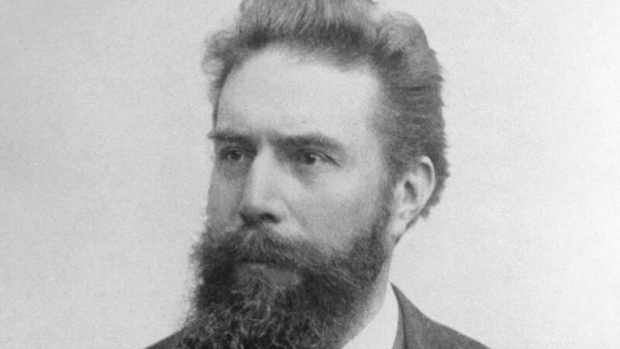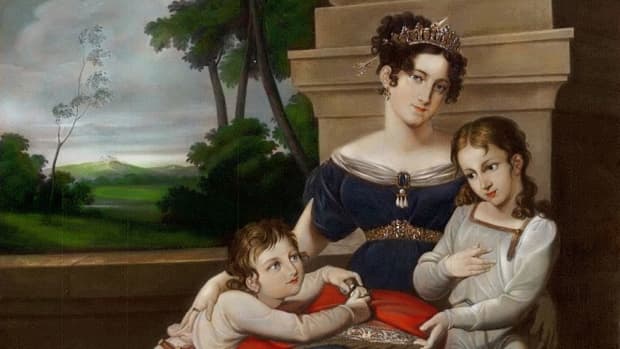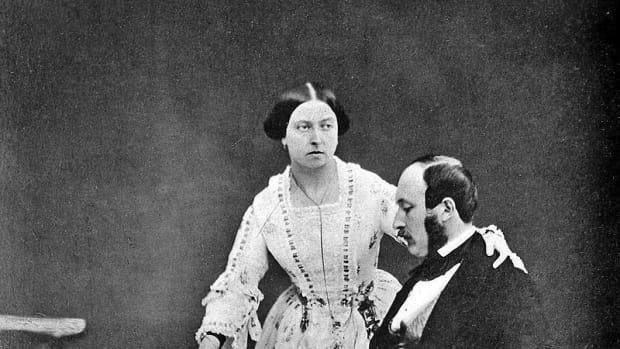Schloss Rosenau: Prince Albert of Saxe-Coburg-Gotha's Birthplace

Schloss Rosenau, the birthplace and childhood home of Prince Albert of Saxe-Coburg-Gotha.
Wikipedia Public Domain
Prince Albert and Schloss Rosenau
Schloss Rosenau in Rödental, Bavaria, Germany was located in the historic duchy of Saxe-Coburg. The palace was the birthplace of the House of Wettin's Prince Albert, the beloved husband of Queen Victoria.
Rosenau translates as "water meadow".
Albert and his older brother Ernst, born in 1818, were close. Their father Ernst I was a hedonist and he had at least three illegitimate offspring. Their mother "young, clever and beautiful" Louise of Saxe-Coburg-Anhalt was banished from her sons lives and the duchy in 1824 for having an affair with Ernst I's equerry Alexander .von Hanstein. She died in Paris in August 1831 aged 30.
The boys were raised at Schloss Rosenau. Their tutor Johann Christoph Florshutz gave them much needed stability amidst the tumultuous exit of Louise and the arrival of their stepmother Marie of Wurttemberg. She was Ernst I's niece and their cousin.
The palace was adored by Albert and Victoria. She declared that if she wasn't the queen she would happily live there. During her first visit she was thrilled that she and Albert slept in his childhood bedroom.
Albert's last visit to Schloss Rosenau was in 1860 when his brother ruled as Ernst II.

Ernst I, Duke of Saxe-Coburg-Gotha was Prince Albert's father. He and his father Franz transformed the medieval castle into a romantic gothic residence.
Wikipedia Public Domain
The Lords of Rosenawe and Ferdinand Pernau
The original property was a medieval residence constructed in the 15th century for the lords of Rosenawe. Its residents took on the name Rosenawe and in time the spelling became Rosenau.
The lords of Rosenau's debts outweighed their income and in 1704 the property was sold to the Austrian born politician, writer and ornithologist Ferdinand Pernau, Count of Rosenau. (Freiherr von Pernau zu Rosenau). He died in October 1731.
Schloss Rosenau passed into the hands of Friedrich II, Duke of Saxe-Coburg-Altenburg. He was Prince Albert's maternal ancestor and the father of Augusta. Princess of Wales, King George III's mother. Duke Friedrich did not enjoy his acquisition because he died in March 1732. The property was eventually sold.
In 1805 the palace returned to Wettin family ownership when Prince Albert's grandfather Franz, Duke of Saxe-Coburg-Saalfeld bought it for his son Ernst to utilise as a summer residence.
Prince Albert's father was Ernst III, Duke of Saxe-Coburg-Saalfeld between 1806 and 1826. He became Ernst I, Duke of Saxe-Coburg-Gotha in November 1826 when the family's duchies were restructured.
Franz and Ernst commissioned the architect Friedrich Schinkel to transform the medieval Schloss Rosenau into a Gothic vision with an air of fairytale romance. The improved palace featured towers, gables and an orangery.
Ernst II and Alfred, Duke of Edinburgh
Prince Albert's older brother Ernst became Ernst II when their father died in 1844. His long suffering wife Alexandrine of Baden quietly endured his wild behaviour. They had no children together although Ernst, like his father, had three illegitimate children and a long line of lovers.
Recommended
Ernst died in 1893. Victoria and Albert's eldest son Bertie was destined to be King Edward VII so he renounced his claim to Saxe-Coburg-Gotha in favour of his next youngest brother, Alfred, Duke of Edinburgh and his descendants. Affie became the Duke of Saxe-Coburg-Gotha and he relocated with his family.
Affie missed his old navy life, his marriage to haughty Marie, born Grand Duchess Maria Alexandrovna of Russia, frustrated him and as their son and four daughters married or moved elsewhere he was increasingly unfulfilled and he drank too much. Marie preferred Rosenau to their English properties.
In 1899 Affie and Marie's heir Alfred shot himself and he subsequently died. The following year Affie passed away. The titles and land were offered to Affie's next eldest brother Arthur, Duke of Connaught in 1899 but he refused for himself and his descendants because they didn't want to lose their English way of life.

Queen Victoria and Prince Albert's second son Alfred, Duke of Saxe-Coburg-Gotha with his wife, daughters and Alexandrine of Baden at Schloss Rosenau. His daughter Victoria Feodorovna of Russia lived at the castle after WW1.
Wikipedia Public Domain
Schloss Rosenau Survives The End of the Duchy of Saxe-Coburg-Gotha
The next and last son of Victoria and Albert was Leopold; he had died in 1884 so Queen Victoria and Leopold's widow Princess Helena, Duchess of Albany dispatched Leopold and Helena's son Leopold Charles Edward to Germany. Charlie, as he was known, was the last ruling Duke of Saxe-Coburg-Gotha.
He was prey for Kaiser Wilhelm II who set to work breaking Charlie's loyalty to Britain.(It worked. He was tried as a war criminal after World War 2).
Charlie lost his British titles in 1917 and he abdicated as the ruling duke of Saxe-Coburg-Gotha in November 1918. He lost some of his properties but he negotiated a satisfactory compensation package with Coburg's politicians.
Schloss Rosenau fell out of Wettin family ownership again but the Coburg government leased it to Charlie's cousins, Affie's four daughters.
Victoria Feodorovna of Russia, Affie and Marie's second daughter Victoria Melita or Ducky, lived at The Rosenau from the 1920s and she was laid to rest there in 1936. She was given a burial on Russian soil in 1995.
The Recent History of The Rosenau
During the Second World War Schloss Rosenau was a base for the Nazi affiliated National Labour Service. Dwight Eisenhower used it during the closing stages of the war and the property then housed refugees.
For two decades from 1948 Schloss Rosenau was a private nursing home.
When the nursing home closed The Rosenau was left unoccupied for a few years before ministers of the Free State of Bavaria decided to purchase and restore it. This took a substantial amount of time and money.
The late Queen Elizabeth II possessed watercolours of the palace in the Windsor Castle archives and these were used to restore it to its former opulence.
The palace is still owned by the local government and today Schloss Rosenau is a popular tourist attraction. Prince Albert's cradle is on display and each summer concerts are held in the Marble Hall that he was christened in.
The post war nominal heads of the Saxe-Coburg-Gotha dynasty, Charles Edward, Friedrich-Josias and Andreas, the son and grandson of Charles Edward, haven't tried to return Schloss Rosenau to their family's property portfolio.
Prince Andreas lives at Schloss Callenberg in Beiersdorf.
Sources
- Rosenau Palace - History and Facts | History Hit
- Coburg | Medieval Town, Bavarian City, Franconian Region | Britannica
- Bavarian Palace Administration | Rosenau Palace
Official website of Ehrenburg Palace at Coburg and Rosenau Palace and Park at Rödental
This content is accurate and true to the best of the author’s knowledge and is not meant to substitute for formal and individualized advice from a qualified professional.
© 2023 Joanne Hayle







